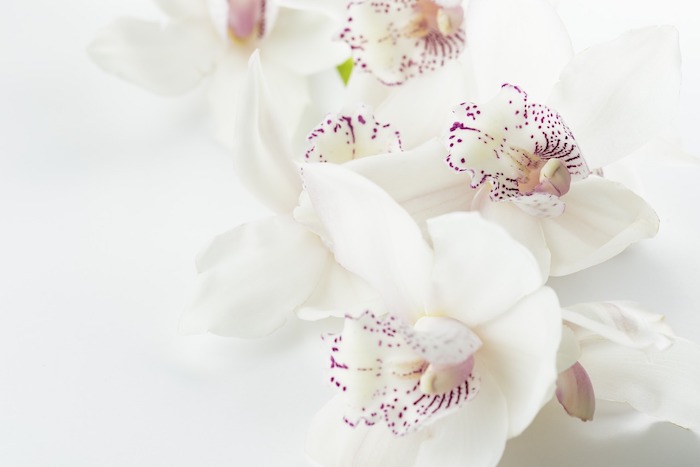If you’ve been to France (or seen a stereotype-heavy Hollywood film set there) chances are you know snails are a delicacy sometimes served there. Still, whether you’d greet a plate of snails with “Merci!” or “Mon Dieu!” have you ever wondered what your garden snail would “escargot for” themselves?
Some snails enjoy a smorgasbord, while others are quite picky – so, what do garden snails eat? The answer will vary, but vegetation and fungi are your best bet. That said, some snails have more “expanded palates,” so omnivorous and even carnivorous dishes aren’t necessarily off the menu, either.
What the snails consume largely depend on where they live and the type of species they are. Some conventional foods that they feed on arefruits, vegetables, decayed plant parts, and algae. A few species also eat soil and sand for a calcium-rich diet to build a thicker shell.
As with people, different snails have different tastes and preferences, so let’s take a look at what these petit shelled creatures love eating.
What Snails Eat: An Informational Buffet
One of the most important things to note about snails and their diets is that they vary in large part because their locations vary. In this context, the term “garden snail” is a bit of a misnomer because, while you might well find one in your garden, what your garden looks like and, even more importantly, the vegetation and climate in which it exists is bound to be way different from those in other places.
Just think how different the vegetation is in a desert area like Arizona or Saudi Arabia compared to more tropical conditions such as Florida and the Caribbean. And of course temperate conditions such as are found in France are different still.
As noted above, just about all snails (specially the garden ones) are herbivorous. That’s why you can pretty much never go wrong with a vegetarian diet, although as we’ll see, the nature of that diet and the way in which it’s served up can vary wildly. Still, garden snails and vegetation go together like a fine wine and cheese platter.
Garden Gourmands
Of course, that raises another problem with snails, one which gardeners are all too familiar with, and that is their intense love for greens. If you’re a gardener, maybe you’ve made peace with snails, but you might well have also had moments of pure fury upon noticing a cadre of snails gobbling your gardenias or leafy greens.
However, what’s a pest problem for gardeners is a gift for garden snail keepers, as this provides keen insight into what your snail actually likes to eat. If you know a gardener who’s had to deal with snails, in between their bouts of snail-chucking shell-crunching fury (quelle horreur!) ask them what plants the snails in their garden like to eat. While they’re probably grumbly about snails gobbling up their greens, their information could help you compile a perfect garden snail buffet from your own garden.
Aged Like a Fine Lettuce?
That said, should you serve those leafy greens fresh?
You would think that this would be an easy yes – after all, it’s not as though you’re likely to find a plate of brown wilted lettuce very appealing. But your snail might. In fact, while some snails do indeed eat fresh leafy greens, many actually prefer their meals to be wilted and brown.
If that seems baffling or gag-inducing to you, remember that we age wine. Speak to someone who really loves wine, and chances are they’ll prefer vintages from years or even decades back to those that were bottled this year. That doesn’t mean new wines are bad per se, but rather that there’s a reason why, if something ages gracefully or even beneficially, we say it has “aged like a fine wine.”
Your garden snail may not be all that interested in your finely-aged bottle of Bordeaux, but 1. That just means more for you, and 2. They might enjoy a “finely-aged lettuce” that’s been allowed to wilt and brown for a few days before it’s of a “vintage” they’ll enjoy.
This also ties back into their background as pests. If your garden has wilted-leaf-loving snails all over your plants, it may be a sign that you’re letting them go bad or aren’t watering them enough.
Then there are snails that prefer eating foodstuffs that are a bit riper by our standards.
Among the fruits they tend to enjoy, strawberries are a favorite. On the other hand, citrusy fruits can “sting” a bit, so you’ll want to avoid oranges and similar options.
If you’re looking to add a bit of sweetness into your garden snail’s life and diet, this may be a good choice. Meanwhile, vegetable diets for garden snails include cabbages, cucumbers, carrots, and presumably even some veggies that don’t start with “C.”
Among flowers and weeds, dandelions, daisies, and lilies are also common snail favorites.
It is also important to note that hungry snails are less picky than their well-fed counterparts. If you are struggling to get your snail to even nibble at their dinner, it may be because they’re still full from the last course. Don’t worry – even if they’re ignoring that carrot or browned lettuce now, chances are if your garden snail is healthy, they’ll chow down on it soon enough.
Store Foods and Fungi
You’ll also want to be very careful about feeding your snail store-bought fruits and veggies, which are typically sprayed with pesticides to prevent the very thing you’re trying to do – have a snail eat them. Unless you want your next snail’s meal to be their last (and potentially traumatize any children suddenly wondering how a garden snail got poisoned) you’re best off buying from a dealer or, better still, growing your own snail edibles.
If you have some old wood chippings or are cutting away some brush from your garden, you’re in luck – your snail can act as a free green waste disposal unit.
Then there are algae and fungi. How much your snail likes these can vary wildly. Some species can’t get enough of them, others may turn up their nose (or squishy snail equivalent).
But for those that love them, they really love them, so make sure fungi such as mushrooms in particular are a prominent part of these snails’ diets.
Omnivorous and Carnivorous Snails
Most of the time, a “garden snail” will be perfectly content with the herbivorous diet we have laid out for you. However, some snails are indeed carnivorous or omnivorous. For example, some snails in New Zealand like to supplement all those veggies with a nice course of slugs with a side of earthworms.
This is where it becomes so important to be able to tell what type of snail you have. Needless to say, if your snail isn’t carnivorous, offering them dead earthworms as food is a good way to spoil their day (not to mention their appetite). On the other hand, snails that are carnivorous or omnivorous really do need the calcium, protein, and other nutrients they get from their more varied diet, so it’s important not to neglect this aspect of their dietary needs as well.
Setting the Soil
One very important thing we haven’t talked about yet is the environment in which snails prefer to eat. After all, when we go out for fine dining, we like a little café ambience “Sous Le Ciel de Paris,” so why should your snails enjoy anything less?
Of course, while your snails might not care for Yves Montand or Edith Piaf singing “La Vie en Rose,” a bed of roses is probably an attractive location for them, in large part because of the soft, moist soil. Likewise, your snail will probably prefer their food served in or near the cool damp soil, preferably in the shade, where they can enjoy it in a nice relaxed way. What’s more, the food, too, should be on the damper side.
Related Questions:
What Do Snails Eat in the Wild?
We’ve largely covered this, but it depends on the snail’s surroundings. They typically eat the vegetation in whatever area they inhabit, while in some regions, such as New Zealand, some snails turn carnivorous and eat wild worms and other mollusks.
What Do Snails Eat in the Ocean?
These are actually a very different kind of snail than the ones we’ve been discussing. As such, they tend to lean far more towards algae, although their diets are quite varied.
With this guide, you should be able to find the right food to make your snail say “Bon Appetit!”
See also:
Can You Eat Orchids
Average Lifespan Of A Garden Snail
A Zen Garden: All You Need To Know
How To Clean Garden Tools With Vinegar


